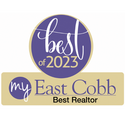Technology
Listen. Three years ago, if you told me a small item ordered from Amazon under $200 was going to be life-changing to my family life, I would have laughed. Fast-forward two years. We’ve had a Roomba (a robotic vacuum) and an Alexa (Amazon Smart Home Speaker) for several months. I can tell you that “life-changing” is a great way to describe it. Now, I’m not one for a ton of techy gadgets. I own what I consider some “easy technology” or “basics” for the generation of 20-40 year olds. An iPhone, tablet, and laptop.
We use our phones to control the television. Always a life saver when the remote has disappeared into the couch cushions. The Roomba and Alexa have been absolutely crucial to our family over the past couple of years. For a working mom of a toddler, The Roomba helps to keep up with the accumulation of dust and crumbs. Smart Speakers help us to remember everything on our to-do list and create last minute Amazon orders (usually diapers). We also love family dance parties with music on The Smart Speaker. Something that doesn’t happen if we’re all glued to the TV screen.
Some Statistics
It turns out that there are many others that are just like me (and my family) when it comes to Smart Home Technology. Smart Speaker use is becoming more consistent in those that own one. But, it hasn’t seemed to take the next leap as far as communication between appliances and devices, like a Smart Home.
- About 20% of Americans have a Smart Speaker or share one with a family member.
- There was a 128% increase of Smart Speaker use from 2017-2018, 4% of purchased were just during the holiday season.
- 65% of Smart Speaker owners would not want to go back to life without them.
- 66% of owners use the Smart Speaker to entertain family and friends. Some top ways to entertain were: play music, ask general questions, ask about the weather, ask jokes, and listen to the radio.
- Where do most people keep their Smart Speakers? 73% of families keep their Smart Speakers in the living room/den or kitchen.
What is a Smart Home?
You might be wondering, “What exactly is a smart home?” The answer is pretty simple, and it’s not Disney’s Movie, Smart House, thank goodness.
SmarthomeUSA defines a Smart Home as being energy efficient, comfortable, having security, and being dynamic so as to have the flexibility to change and develop programs as needed. The resident is able to control all of these various amenities even when nobody is home.
What is a Smart Neighborhood?
A Smart Neighborhood is focused on the future of technology in our everyday lives, particularly to promote efforts to save energy. Smart Neighborhoods often operate on their own microgrid for power, and have backup generators as well. Solar Panels are a main source of power for the microgrid.
The Future of Smart Neighborhoods
Although technology is very popular in many many homes, our growing and changing community doesn’t stop at Smart Speakers and iPhones. Smart Neighborhoods are being developed and built in the Southeast in both Birmingham and Atlanta.
Are you interested in saving time, saving money, and saving energy? Who isn’t? You’ll be excited to learn about the future of technology in our homes and neighborhoods, starting in our very own city and our neighboring state as well.
Altus at the Quarter- Atlanta, GA (Westside)
Up and coming Upper West Side Atlanta is trendy, vibrant, and home to upscale restaurants, new homes, neighborhoods, and even Top Golf. At the corner of Marietta Blvd and Bolton Rd, there will soon stand luxury townhomes with solar rooftops, in-home battery storage, and security systems, locks, lights, cameras, and garage doors all controlled with voice-activation. Where there used to be a dilapidated shopping center and abandoned homes now stands a brand new Publix as well as other upscale stores. This area of Westside is just around the corner from Midtown and Buckhead with easy access to I-75 and I-285.
PulteGroup and Georgia Power have partnered together to bring this Smart Neighborhood to Atlanta, the beginning of the Smart Neighborhood trend here in Georgia.
Reynold’s Landing at Ross Bridge- Birmingham, AL
Alabama Power partners with Signature Homes and other companies to create the first neighborhood in the Southeast to run off its own microgrid.
Alabama Power’s site, smartneighbor.com , shares interesting facts and details about the neighborhood. Operating off of it’s own microgrid powersource, it’s the first of its kind in the Southeast. A natural gas backup generator, state of the art appliances, and integrated technology are all features of the new community. You may be wondering, “Sounds great, but I don’t want to live like the Jetsons”. You’ll be surprised to see that the homes are similar looking to the average new home today. Click here to view photos of the neighborhood’s idea/model house.
Other Smart Neighborhoods and Cities
Toronto
Google’s Parent Company, Alphabet, with Sidewalk Labs– build a Smart City in Toronto- plans underway, information sessions for the community. Discussions of digital electricity generators supplying energy, heated streets and sidewalks, and an adaptive community that can change as the needs of the citizens do over time. Check out this article to learn more about the details of this project and see some images from their community presentation.
Colorado
Pena Station Next is another development with Smart Technology in Boulder Colorado.
Are Smart Neighborhoods our Future?
Smart Neighborhoods are the latest and greatest when it comes to living with technology. Many visionaries think that Smart Neighborhoods will lead to Smart Cities over time, as the technology to do so becomes more readily available. In fact, new California building codes mandate that beginning in 2020 all new homes built must include advanced energy efficiency products and devices.
The future of Smart Neighborhoods and Energy Efficiency could be right around the corner. Many are hopeful that the testing of microgrids in smaller communities is the beginning of the Future of Energy Infrastructure.
Even if your techie game stops at your iPhone or Android, you won’t be sorry for introducing some Smart Home compatible devices into your life. With a few simple adjustments, you won’t have to create handwritten to-do lists anymore. And with a little introduction into some Smart Home technology, you’re one step closer to adapting to the future and the ever changing world of technology we live in.
So, what do you think about Smart Homes and Smart Neighborhood Technology? Do you think we will see the transition during our lifetime?
Checkout our other blogs by visiting our archive.



